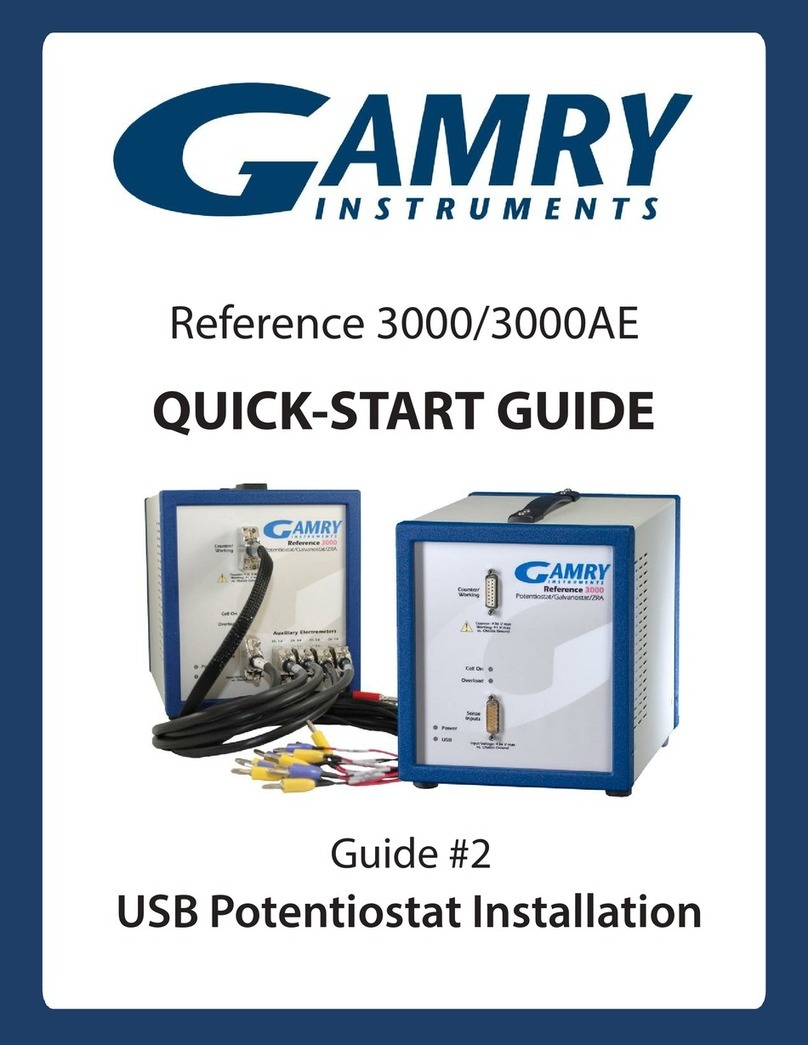1
Table of Contents
Chapter 1: Safety Considerations ................................................................................................... 3
Inspection ........................................................................................................................ 3
Product Safety.................................................................................................................. 3
AC Mains Connection to the Power Brick ......................................................................... 3
Grounding in the Reference 600+ ................................................................................... 4
Operation with Earth-Grounded Cells and Auxiliary Apparatus.......................................... 5
Temperature and Ventilation ............................................................................................ 5
Defects and Abnormal Stresses ......................................................................................... 6
Environmental Limits ........................................................................................................ 6
Cleaning........................................................................................................................... 6
Service ............................................................................................................................. 7
RF Warning ...................................................................................................................... 7
Electrical Transient Sensitivity ........................................................................................... 7
CE Compliance ................................................................................................................ 8
RoHS Compliance............................................................................................................ 8
Chapter 2: Introduction................................................................................................................. 9
About this Manual ............................................................................................................ 9
About the Reference 600+ .............................................................................................. 9
Notational Conventions .................................................................................................... 10
Chapter 3: Instrument Circuitry ..................................................................................................... 11
Reference 600+ Schematics and Block Diagrams ............................................................. 11
Chapter 4: Installation ................................................................................................................... 19
Initial Visual Inspection..................................................................................................... 19
Physical Location.............................................................................................................. 20
Computer Requirements .................................................................................................. 20
Quick-start Guide for System Installation .......................................................................... 21
Software Installation ......................................................................................................... 21
Reboot your Computer after Software Installation ............................................................. 21
Power Cord and Power Connection.................................................................................. 22
Power-up Test.................................................................................................................. 23
USB Cables ...................................................................................................................... 23
Front Panel USB LED........................................................................................................ 24
Cell Cable Installation....................................................................................................... 24
Multiple Potentiostat Systems ........................................................................................... 25
First-time Device Installation in Windows®........................................................................ 25
Running the Framework ................................................................................................... 25
Framework Device Status Bar ........................................................................................... 25
Gamry Instrument Manager .............................................................................................. 26
Blink Button ..................................................................................................................... 29
Changing the Label........................................................................................................... 29
The Reference 600+ Customization Label........................................................................ 30
Chapter 4: Calibration ................................................................................................................... 33
Introduction ..................................................................................................................... 33
Instrument DC and AC Calibration ................................................................................... 33
Cable Calibration ............................................................................................................. 35
Low I Range DC Calibration ............................................................................................. 37
Chapter 5: Cell Connections.......................................................................................................... 39
Normal Cell Connections.................................................................................................. 39
ZRA Mode Cell Connections ............................................................................................ 40





























